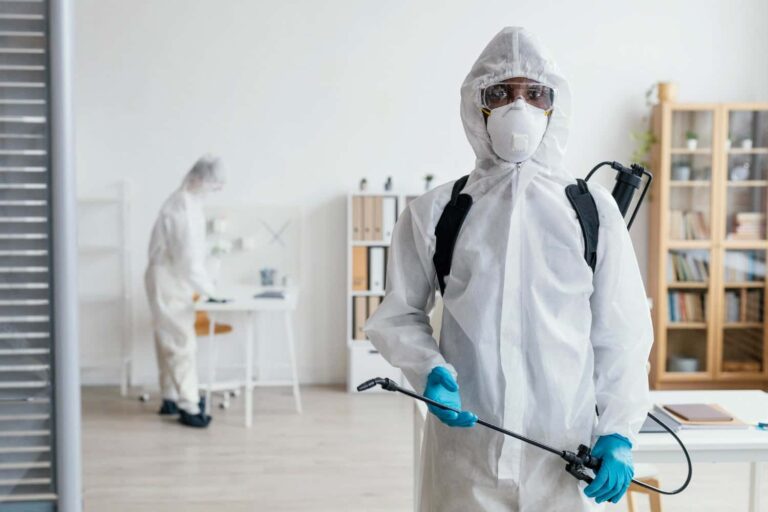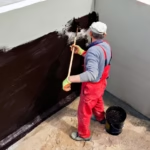Today we’re talking about child-safe approaches to pest management. A few months back, my sister’s toddler got into a cabinet where she kept some pretty harsh chemical pesticides. Nothing bad happened, thank goodness, but it was definitely a wake-up call for our whole family.
Kids are curious little creatures who touch everything and put half of what they touch into their mouths. That’s just what they do. So when we have bugs or other pests in our homes, we need solutions that won’t put our little ones at risk.
I’ve spent years trying different methods to keep the creepy crawlies away without bringing dangerous chemicals into my home. Some worked great, others not so much. But I’ve learned a ton along the way that I’m excited to share with you.
Why Child-Safe Approaches?
Let’s talk about why child-safe pest control matters in the first place. Standard pesticides can be really nasty stuff. The active ingredients in many commercial products can cause everything from skin irritation to respiratory problems if kids are exposed to them.
The American Academy of Pediatrics actually warns parents about this. Children’s developing bodies process toxins differently than adults do. Their organs are still developing, they breathe more air per pound of body weight, and they’re just more vulnerable overall.
I learned this the hard way when my nephew developed a rash after crawling around on our freshly sprayed kitchen floor. We had to get help with pest control from a company specializing in non-toxic methods after that incident, and it completely changed my approach.
There’s also the issue of pets, who can be just as vulnerable as kids. My cat Whiskers once licked some ant poison and ended up at the emergency vet. Not fun for anyone involved, especially my wallet.
Bottom line – why use potentially harmful chemicals when safer options exist? The peace of mind alone is worth it.
10 Child-Safe Approaches to Household Pest Management
I’ve put together what I consider the top 10 safest and most effective ways to deal with household pests when you’ve got kids around. None of these methods will put your children at risk, and many of them work just as well as the chemical alternatives.
Most of these approaches focus on prevention rather than elimination. Trust me, it’s way easier to keep pests out than to evict them once they’ve moved in. Think of it like keeping your home clean – a little regular maintenance beats a massive deep clean any day.
I’ve tested all these methods in my own home with my three kids running around. They’re practical, affordable, and most importantly, they work.
Seal Entry Points
First up is the most effective strategy I’ve found – just don’t let those bugs in to begin with! Sealing entry points around your home is like hanging a “no vacancy” sign for pests.
After my run-in with a mouse family that somehow got into our pantry last winter, I went on a serious sealing mission. I grabbed some steel wool and caulk and spent a Saturday checking every possible entry point.
Start by examining the outside of your home. Look for cracks in the foundation, gaps around pipes, and spaces around doors and windows. Even a gap the size of a pencil can let mice in, and bugs need even less space.
For bigger gaps, I use steel wool (pests hate chewing through it) followed by caulk to seal it in place. For smaller cracks, caulk alone does the trick. Weather stripping around doors and windows pulls double duty – keeps pests out and saves on heating bills.
Don’t forget about your screens! Last summer we had a major fruit fly problem because one window screen had a tiny tear my daughter made with a stick. Fixed the screen, flies disappeared.
This approach costs maybe $20 for supplies but saves hundreds in potential pest control bills later.
Maintain Cleanliness and Sanitation
Pests are looking for food, water, and shelter. Take those away, and they’ll find somewhere else to hang out.
In our house, we established some simple rules that made a huge difference:
- No food anywhere except the kitchen and dining room
- Clean up spills immediately
- Take out trash daily
- Store pet food in sealed containers
- Don’t leave dirty dishes overnight
The biggest game-changer was getting my kids to understand why this matters. We made it into a “bug detective” game where they help spot potential pest attractants.
My son used to sneak snacks to his room until he found ants having a party on some forgotten crackers under his bed. Now he’s the clean-up police!
For families with young kids, this might seem impossible. But even small improvements help. Just focus on food management first – that’s where you’ll see the biggest results.
Natural Repellents
Natural repellents have been my secret weapon for years. They’re safe enough that I don’t worry when my toddler touches surfaces where I’ve used them.
Vinegar is amazing for ant problems. After noticing a line of ants heading toward our pantry last month, I sprayed a vinegar solution along their trail. They disappeared within hours! Just mix equal parts white vinegar and water in a spray bottle.
Essential oils work great too. Peppermint oil keeps spiders away like magic. I put about 15 drops in a spray bottle with water and spritz around windows and doors every couple weeks.
Citrus peels repel ants and roaches. I save orange and lemon peels, let them dry out a bit, then place them in cabinets and along baseboards.
Tea tree oil, lavender, and eucalyptus all have pest-repelling properties too. They smell nice to us but send bugs running the other way.
My kids actually enjoy helping make these natural repellents. My daughter calls our peppermint spray “spider goodbye juice” and loves to help spray it.
Diatomaceous Earth (Food Grade)
Diatomaceous earth sounds fancy, but it’s actually just fossilized algae ground into a fine powder. The food-grade version is completely safe for humans and pets but deadly for insects.
I first tried this stuff after battling fleas when we adopted our rescue dog. Chemical flea treatments seemed too harsh with kids around, so I gave DE a shot.
It works by basically dehydrating insects. Their exoskeletons get tiny cuts from the sharp microscopic edges of the powder, and they dry out and die. Sounds brutal, but it’s effective!
I sprinkle it along baseboards, under appliances, and anywhere I’ve seen bugs. For fleas, I worked it into our carpet with a broom, let it sit overnight, then vacuumed it up.
The key is getting food-grade DE, not the pool filter kind. Food grade is safe enough to eat (though why would you?), while the pool stuff can hurt lungs if inhaled.
One $10 bag has lasted me over a year, making it super economical too.
Boric Acid (Used with Caution)
Boric acid is one of those in-between solutions – not as harsh as commercial pesticides but not completely non-toxic either. It requires careful handling around kids.
I use it only in places children absolutely cannot reach, like behind appliances or inside wall voids. It’s particularly effective against roaches and ants.
The way I apply it is by mixing it with something sweet like sugar or honey to attract the pests. They eat it, take it back to their colony, and it disrupts their digestive systems.
My approach is to put the mixture in small bottle caps and place those in unreachable spots. I then keep track of exactly where I’ve put them so I can remove them when the pest problem is resolved.
If you have very young children or pets who get into everything, you might want to skip this method and stick with the completely non-toxic options.
Pest-Repelling Plants
Adding certain plants around your home is like setting up a natural pest barrier that looks pretty and smells nice too!
After reading about this approach in a gardening magazine, I went plant shopping and grabbed several pest-repelling varieties. Mint keeps ants and mice away. Basil repels flies and mosquitoes. Lavender deters moths, fleas, and mosquitoes.
I keep potted mint plants near entry points and doorways. Basil has a spot on our kitchen windowsill. Lavender grows by our patio where we spend summer evenings.
My kids each got to pick a plant to care for, which got them invested in our pest management system. My son’s basil plant is thriving, and he’s so proud when we use it for cooking AND pest control.
Chrysanthemums are another powerhouse – they contain pyrethrum, which is actually used in many commercial insecticides but is much safer in plant form.
The bonus is that many of these plants are useful for cooking or making tea, so they serve double duty!
Traps Instead of Poisons
Sometimes you just need to catch and remove pests, especially larger ones like mice or rats. Traps let you do this without poisons that could harm kids.
After finding mouse droppings in our garage last fall, I set up several types of traps to see what worked best.
Sticky traps work well for insects but I avoid them for rodents since they’re not the most humane option. For mice, I use the classic snap traps baited with peanut butter, placed where kids can’t access them.
For flies, those hanging sticky strips work amazingly well. We hang them high enough that curious fingers can’t reach.
My favorite traps are the catch-and-release kind. We caught a mouse in one, and it became an educational moment for the kids as we released it in a field far from any homes.
If you’re dealing with fruit flies, a simple trap of apple cider vinegar with a drop of dish soap in a cup works wonders. The vinegar attracts them, and the soap breaks the surface tension so they fall in.
Ultrasonic Pest Repellers
Ultrasonic pest repellers are devices that emit high-frequency sounds that humans can’t hear but drive pests crazy. The jury’s still out on how effective they really are, but I’ve had some success with them.
We plugged one in near our basement door where we occasionally saw spiders. The spiders definitely became less common, though they didn’t disappear completely.
These devices are completely safe for kids since the sound frequencies are outside human hearing range. Some claim they bother pets, but our dog and cat never seemed to mind.
I think they work best as part of a comprehensive approach rather than a standalone solution. They’re like having an extra layer of protection.
The best part is that once you buy them, they just work in the background with no additional effort from you. Just plug them in and forget about them.
I found some at our local hardware store for about $15 each, and we now have three strategically placed around the house.
Regular Maintenance and Inspection
Being proactive beats being reactive every time when it comes to pest control. Regular inspection and maintenance has prevented numerous potential infestations in our home.
Once a month, I do a full perimeter check of our house, looking for new cracks, holes, or potential entry points. I check window screens for tears and door sweeps for gaps.
Seasonally, I inspect attic and basement spaces with a flashlight, looking for signs of unwelcome guests. Droppings, gnaw marks, or nests are obvious red flags.
I also keep an eye on our yard, trimming branches away from the house and keeping woodpiles far from the foundation. When we let our landscaping get overgrown last summer, we noticed more spiders making their way indoors.
Making these inspections routine means catching problems while they’re still small. It’s much easier to seal one new crack than to deal with the family of mice that found it first!
My kids even help with these inspections now. They think it’s like a treasure hunt, except we’re hunting for potential pest problems instead of gold.
Hiring Child-Safe Pest Control Services
Sometimes, despite our best efforts, we need professional help. When we had a serious ant problem two summers ago, I called in the experts.
Many pest control companies now offer child and pet-safe treatment options. When I was researching companies, I specifically asked about their child-safe approaches and what chemicals, if any, they use.
The company we chose used a combination of targeted bait stations in completely inaccessible areas and perimeter treatments that were safe once dry. They were happy to explain exactly what they were doing and why it was safe for my family.
They also provided advice on prevention that we still follow today. The technician pointed out entry points I had missed and suggested moving our compost bin farther from the house.
It cost more than doing it ourselves, but the peace of mind was worth every penny. Plus, they offered a guarantee, so when a few stragglers appeared a week later, they came back at no extra charge.
Conclusion
Keeping your home pest-free doesn’t have to mean choosing between bugs and harsh chemicals. These child-safe approaches have kept our home virtually pest-free for years now.
What works best is combining several methods. We maintain cleanliness, seal entry points, use natural repellents, and have a few strategically placed plants and ultrasonic devices. It’s like having multiple layers of defense.
The effort is minimal once you’ve set up your system. A little prevention goes a long way, and it becomes just another part of maintaining a healthy home.
I love that my kids can now identify different pests and know how we keep them away without dangerous chemicals. They’re learning valuable skills they’ll carry into adulthood.



